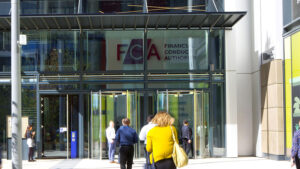It is a challenging environment for fixed income investors as growing risk concerns collide with the ongoing volatility in traditional safe haven government bonds. The path of inflation and the thrust of central bank moves to control it dominate the fixed income outlook for the second half of 2022 – most notably the Federal Reserve’s aggressive shift toward tightening through both rate increases and balance sheet reduction.
These and other central banks’ steps to slow their economies have contributed to declines in fixed income asset classes amid stagflation fears, which are understandable but, we believe, may be overblown given high levels of employment and a strong consumer and corporate balance sheets, writes Pinebridge Investment’s Steven Oh (pictured).
Exacerbating these challenges are major geopolitical risks, most notably the conflict in Ukraine and its implications not only for energy and food prices but for risk appetites across the credit spectrum. China’s lockdowns are also weighing on sentiment – though the Chinese government’s recent pivot to a ‘dynamic’ Covid policy could bring back a sense of normalcy and help support its economy.
As we look forward across the second half of the year, we see three key trends in the global fixed income sector of particular note: constructive on select segments of emerging market debt; high yield playing catchup with loans; and a widening of investment grade spreads in the near term.
Constructive on select segments of emerging market debt
We see value opportunities emerging in the context of sovereign and sector driven risk events coupled with strong baseline corporate fundamentals. Furthermore, the absence of outflows following the events in Ukraine and on-going China property malaise and limited supply has aided the technical outlook.
EM sovereign spreads have optically tightened following the March announcement that Russia and Belarus would be removed from indices the next month. Sovereign EM issuance is running at just 40% of last year’s pace. Investment grade underperformed high yield significantly as the market’s focus turned to the Fed’s hiking cycle and the reset of the US Treasury curve.
But while assets have continued to trickle out of the EM bond market, we see no signs of panic. We remain constructive over the long term given expectations of flat net issuance and continued new allocations to the asset class. We have historically favoured corporate debt in emerging markets, which is relevant in a rising rate environment, as duration is much shorter than in the sovereign market.
High-yield playing catch-up with loans
Leveraged finance markets have experienced a fair amount of volatility, much of it related to rates moves – specifically for high yield, as a fixed-rate product. Treasury rates have widened materially, which drives where loan and bond markets trade, and spreads on these assets have widened also.
Prices of both high yield bonds and bank loans have come under pressure as volatility spiked and spreads widened rapidly amid increasing concerns that Fed tightening will choke growth and lead to recession.
Given the year-to-date moves in Treasury rates and the massive outperformance of loans vis-à-vis high yield, the weighted average price in the high yield market is significantly below that of the loan market.
While we see the potential for high yield spreads to continue to widen and overshoot on the downside, we believe this differential in terms of the average discount to par will eventually provide a tailwind.
Investment grade spreads to widen in the near term
In a largely technical-driven market, the backdrop for investment grade credit is mixed. On the positive side, broker-dealer inventories remain relatively low. Though an imminent recession is not our base case, the downside risks in this market call for continued defensive positioning.
As a longer-duration fixed income asset class, investment grade credit has been hit hard by the Fed’s aggressive policy stance and the backup in rates thus far, with spreads widening substantially. While buying by Taiwan insurers and US pension funds had offset some of the spread widening, and all-in yields remain attractive to investors, we believe spreads will continue to see spreads continue to widen in the near term.
While an ongoing defensive positioning may entail trailing a bit overall in terms of performance, we believe that with the Fed looking to tighten monetary conditions and reduce its balance sheet, the economy is strong but showing some signs of weakness.
For this reason, rallies should be viewed as an opportunity to further reduce risk and to build up more dry powder in anticipation of an eventual Fed pivot – at which point investors may want to be ready to take on risk.
This article was written for Portfolio Adviser by Steven Oh, global head of credit and fixed income at Pinebridge Investments.







